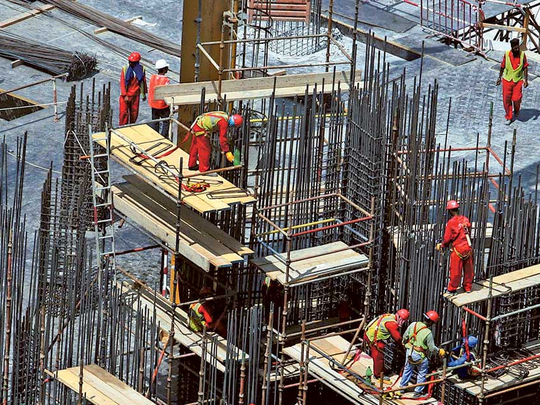
Dubai: The UAE is the second most expensive market to engage in construction activity among Gulf states, with Qatar being the costliest, according to a new survey by the specialist consultancy EC Harris.
With a stream of new projects set to emerge from the pipeline this year, especially those from the government sector, this would have been enough to set off an inflationary spiral and stretch margins in the industry.
But the recent erosion in the global price of oil could alter the picture somewhat — only time will tell whether the impact is limited to the short term or extend into the medium. “Abu Dhabi is best placed to be able to continue to fund budget commitments … but with oil trading hovering around $50 a barrel earlier this month, it is possible that current and capital spending priorities may come under review,” said Christopher Seymour, Partner and Head of UAE Property at EC Harris.
“Investment on social infrastructure, (on) economic diversification and event-driven construction are three key trends positively influencing construction spend in the region.”
In Qatar and Dubai, “event-driven” construction — such as those for the 2022 World Cup and the Expo 2020 — will continue to underpin the level of investments channelled by government agencies into new projects. But how well private sector operators can cope with higher project costs is a moot point.
“The southward trend in oil prices is more recessionary than inflationary,” said Bharat Bhatia, CEO of Conares, which operates a steel rebar plant. “The normal tendency is that spending [sentiment] gets affected as availability of cash becomes tighter, while profits may become marginal to minimal.
“Infrastructure development may succumb to some recessionary trends, but as long as the fundamentals of an economy are stable and the direction of developments planned out, these challenges may even present good opportunities.
Gestation period
“There’s no doubt certain adjustments need to be made either at the macro or micro levels of the economy. Also, the trickle effect of a recessionary trend normally has a certain gestation period.
“Spending that may have been earmarked could be put on hold until the market gets adjusted to the new oil price levels.”
Even then, there could be silver linings for the construction industry. If oil prices remain weak and the dollar pushes higher, cost of imported building materials from key sourcing countries should come down appreciably.
“Commodity prices remained in check during 2014 with costs dipping and limiting construction cost inflation across most global markets”, according to the ARCADIS International Construction Cost report.
“Increasing tensions in the Middle East and Ukraine could potentially reverse this trend as we head into 2015. Aluminium and nickel prices are up on the year but copper and steel prices are down. The fall in the price of iron ore has continued throughout the year, with prices down by around 40 per cent. However, the most striking trend in the year has been the rapid fall in the price of crude oil since September”.












